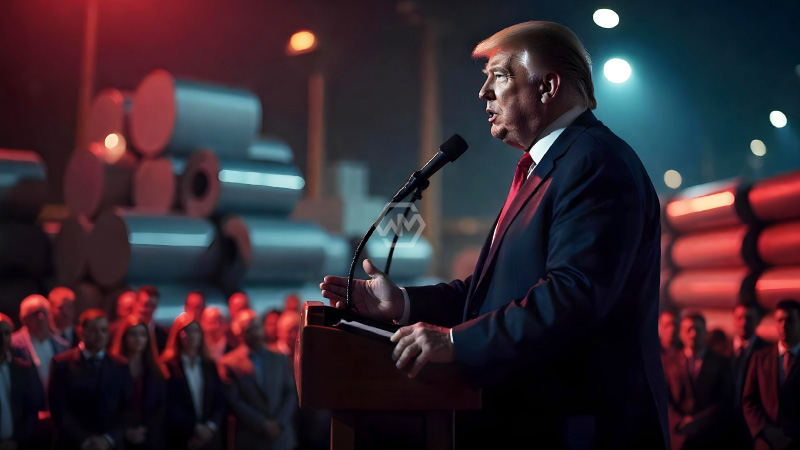- U.S. tariffs on steel and aluminum imports rise from 25% to 50% starting June 4.
- Trump frames the move as a boost for American manufacturing and job protection.
- Canada and Australia criticize the policy as harmful to trade and consumers.
President Donald Trump has announced a significant escalation in his protectionist trade agenda by doubling tariffs on steel and aluminum imports to 50%. Speaking at a rally in Pennsylvania—home to major steel operations—Trump emphasized the move as a necessary defense for American industry.
The announcement came alongside praise for a $14.9 billion deal between Nippon Steel and U.S. Steel, which Trump presented as proof of renewed investment in domestic production.
Steel Curtain: Trump’s 50% Tariff Marks Sharp Turn in Trade Policy
The decision to double tariffs represents a return to Trump’s first-term strategy of economic nationalism. By raising barriers on steel and aluminum imports, the administration aims to incentivize local production and revive industries once seen as the bedrock of American labor. The announcement‘s location—Mon Valley, near Pittsburgh—was carefully chosen to underscore the symbolic value of steel in U.S. history.
Trump’s campaign-style rhetoric suggested the move is as much political as economic. Facing a competitive re-election bid, he is targeting industrial regions that swung red in 2016. By promising to “put Pennsylvania steel into the backbone of America,” he positions himself as a defender of American workers and a challenger to global supply dependencies.
Global response was swift and pointed. Canada’s Chamber of Commerce warned of supply chain disruption and increased costs for both countries, while Australia called the move “economic self-harm.” These reactions highlight the delicate balance between trade protection and diplomatic cooperation, especially among long-standing allies.
Meanwhile, the legal landscape remains uncertain. While similar tariffs have faced judicial scrutiny, they’ve so far been upheld pending litigation. Whether this new 50% increase withstands legal and international trade body challenges is yet to be seen—but it signals that Trump’s trade war playbook is back in full force.
Trump’s aggressive tariff shift signals a strategic gamble: shore up domestic support at the risk of igniting trade retaliation and market uncertainty. The fallout, both political and economic, will unfold in the coming months.
“At 50%, they can no longer get over the fence.” – Donald Trump



